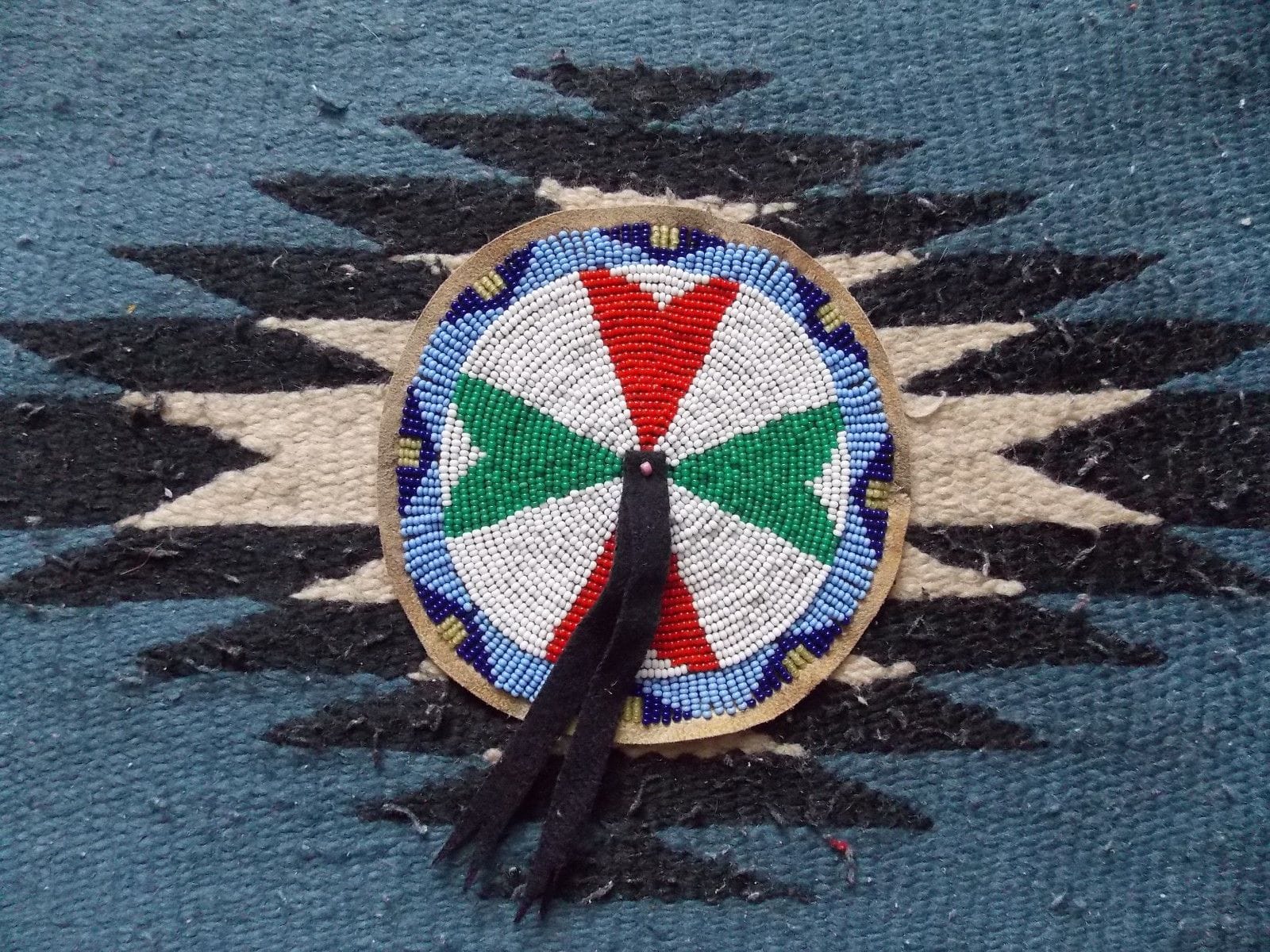Picture this: a vast, windswept plain where bison roam, and the sky stretches endlessly above. In this landscape, the Sioux, a group of Native American tribes with a deep connection to the land, crafted not just their lives but also intricate masterpieces that echoed their beliefs, history, and dreams. These weren’t just crafts; they were visual stories woven into the very fabric of their existence. From the iconic beadwork that shimmers with vibrant hues to the lesser-known pottery traditions that speak of practicality and resourcefulness, Sioux artistry offers a window into a rich cultural tapestry that continues to captivate and inspire. Join us as we journey beyond the familiar to uncover the diverse artistry of the Sioux people.
A Legacy Woven from Nature: Materials and Meaning
The Sioux people, comprised of the Lakota, Dakota, and Nakota, held a deep reverence for the natural world, and this profound connection resonated through their art. The very materials they used were gifts from the earth, each imbued with meaning and purpose. Buffalo, a sacred animal central to their way of life, provided hides that transformed into durable clothing, sturdy tipis, and canvases for breathtaking paintings. The quills of porcupines, meticulously harvested and dyed, became intricate embellishments on clothing and ceremonial objects. Even humble clay from the earth was molded into vessels, reflecting both artistry and practicality.
More Than Decoration: Beadwork as a Visual Language
Perhaps the most recognizable art form associated with the Sioux is their breathtaking beadwork. While the Sioux were already creating intricate designs with dyed porcupine quills and natural materials like bone and shell, the arrival of European glass beads in the 1700s ignited a new era of artistic expression. Glass beads, with their captivating brilliance and vast color palettes, allowed the Sioux to expand their creative horizons.
Beadwork wasn’t merely decorative; it was a complex visual language. Intricate geometric patterns, often inspired by the natural world or ancestral stories, were meticulously stitched onto clothing, moccasins, bags, horse gear, and cradleboards. The “lazy stitch,” a technique unique to the Sioux, allowed for greater fluidity in their designs. Colors weren’t chosen randomly; they held symbolic weight, representing clans, personal achievements, spiritual beliefs, or even connections to the cosmos. A beaded garment, then, became more than just clothing; it was a walking narrative, a testament to the wearer’s identity and place within the community.
Quillwork: A Legacy of Patience and Precision
Before the widespread adoption of glass beads, quillwork reigned supreme in Sioux artistry. Imagine the patience required to harvest, clean, sort, dye, and meticulously flatten each individual porcupine quill! This laborious process speaks volumes about the reverence the Sioux held for their craft and the precious materials bestowed by nature.
Dyed in vibrant hues derived from plants and minerals, the quills were then meticulously applied to hides using techniques like wrapping, plaiting, and sewing. Motifs like stylized animals, flowing floral patterns, and bold geometric designs adorned clothing, moccasins, pipe bags, and ceremonial objects. Each piece likely took weeks, if not months, to complete, reflecting an extraordinary level of dedication and skill.
While glass beads may have eclipsed quillwork in popularity for a time, this ancient art form is experiencing a powerful resurgence. Contemporary Sioux artists are breathing new life into this traditional craft, ensuring that the legacy of quillwork continues to be passed down through generations.
Painting and Pictographs: Stories Etched in Time
For the Sioux, art wasn’t confined to the realm of objects; it spilled onto expansive canvases like buffalo hides, tipis, and even rock faces. Natural pigments, derived from crushed minerals, berries, and other natural sources, provided a surprisingly vibrant palette.
Imagine a buffalo hide stretched taut, transforming into a canvas for epic narratives. Skilled Sioux artists, using brushes fashioned from sticks or animal hair, painted scenes of thrilling buffalo hunts, fierce battles, significant historical events, and even mystical visions. These hide paintings, often draped within tipis or worn for ceremonial occasions, served as powerful visual aids for storytelling, preserving history, and connecting with the spirit world.
Pictographs, another form of Sioux artistry, offer a glimpse into the past. Found on rock faces and cave walls, these enduring images, pecked into the stone, likely served a multitude of purposes. Some scholars suggest they may have marked important territorial boundaries or served as a way to communicate with other tribes. Others believe they functioned as mnemonic devices, helping to preserve important stories and knowledge for future generations.
Beyond the Expected: Sculpture, Carving, and the Diversity of Sioux Artistry
While beadwork, quillwork, and hide painting often take center stage, the artistic repertoire of the Sioux extends far beyond these well-known forms. The Sioux possessed a natural affinity for three-dimensional art, masterfully shaping materials like wood, pipestone (a type of reddish stone), and bone into objects that were both aesthetically pleasing and steeped in cultural significance.
Pipes, essential for ceremonial and diplomatic purposes, exemplify the Sioux’s carving prowess. Pipestone, quarried from sacred sites, was meticulously carved into pipe bowls, often adorned with intricate effigies of animals, human faces, or symbolic motifs. The long, slender stems of these pipes were equally impressive, often crafted from wood and embellished with intricate carvings or adorned with feathers, beads, and horsehair. These pipes, far more than just smoking implements, served as sacred objects, embodying the connection between the earthly and spiritual realms.
A Living Legacy: Preserving Tradition, Embracing Innovation
The story of Sioux arts and crafts is not relegated to the past; it’s a vibrant, evolving narrative. Despite facing immense challenges throughout their history—from forced relocation to cultural assimilation policies—the Sioux have shown remarkable resilience in preserving their artistic traditions. Knowledge, passed down through generations, ensures that these crafts endure, connecting contemporary artists to their ancestors.
Today, Sioux artists continue to create stunning works that honor the past while pushing artistic boundaries. Some artists meticulously recreate traditional designs and techniques, ensuring the continuity of ancestral knowledge. Others blend traditional forms with modern materials and perspectives, exploring contemporary themes and pushing the boundaries of Sioux artistry. From exquisitely beaded fashion designs to powerful sculptures addressing modern-day struggles, Sioux artists are making their voices heard on the global stage.
Experiencing Sioux Artistry: A Journey of Discovery
Exploring the diverse arts and crafts of the Sioux is an invitation to delve into a world of beauty, symbolism, and cultural richness. Each piece, whether a meticulously beaded moccasin or a weathered pictograph etched into a canyon wall, tells a story, whispering of a people deeply connected to their environment, their history, and their spirituality.
To truly appreciate Sioux artistry is to move beyond seeing objects as mere decorations. It’s about recognizing the depth of meaning woven into every design, every stitch, and every carefully chosen material. As we marvel at the skill and artistry, we’re reminded of the power of art to transcend time, connecting us to cultures, stories, and perspectives far beyond our own.
Interested in knowing the secrets of equality in tribes that travel? Dive into our in-depth article on equality in existing nomadic tribes to discover the hidden dynamics of these fascinating communities.









